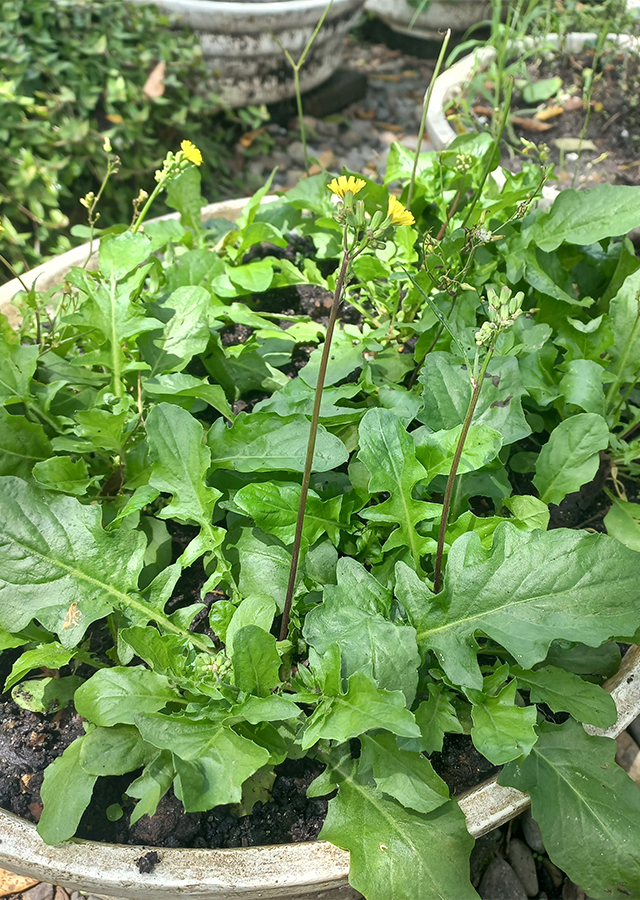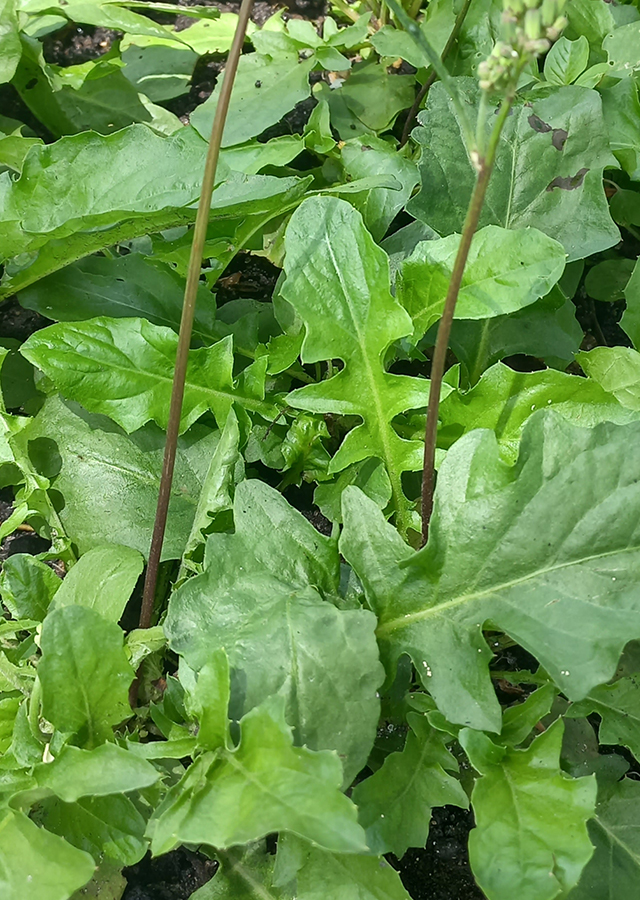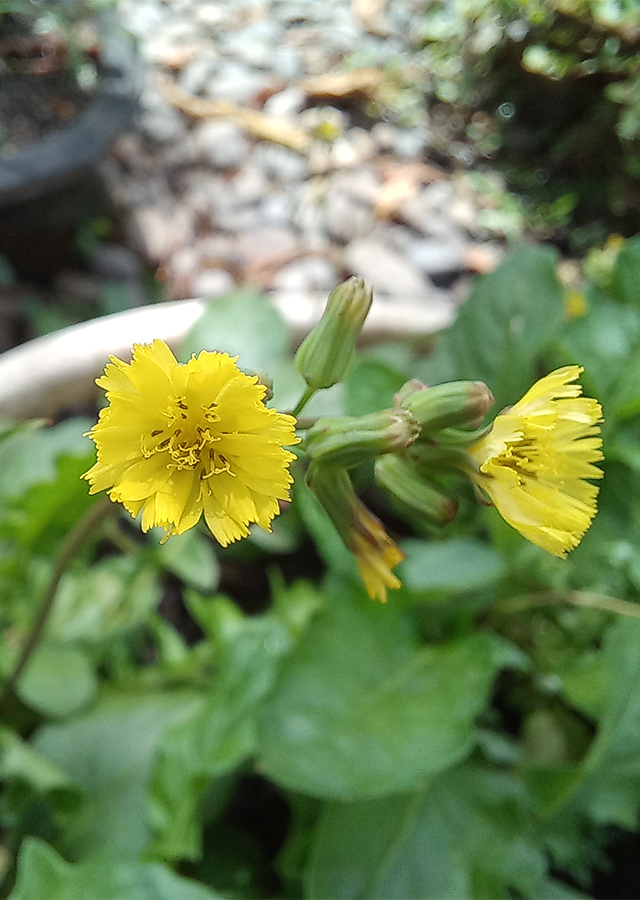Oriental False Hawksbeard
Youngia japonica (L.) DC.
Asteraceae
Location in our garden
Beneficial Weed



Synonym
Chondrilla japonica Lam.
Crepis formosana Hayata
Youngia integrifolia Cass.
Habitus
Herbaceous. An annual or biennial herbs, up to 10-150 cm in height
Part Used
Leaves
The Whole Plant
Growing Requirements
Full Sunshine
Habitat
Forest
Coastal
Roadside
Grassland
Terrestrial
Overview
Youngia japonica is considered a pantropical weed, probably originating from China, where it has extended into subtropical and tropical regions. Currently, Youngia japonica is listed as native in temperate and tropical Asia and Australia, it has been introduced in Africa, the Canary Islands, the Americas and many Pacific Islands. It is harvested from the wild for local use as a food and medicine. In Asia, the young leaves and young plants of Youngia japonica are consumed as vegetable, either raw or cooked. In adittion, all plant parts of Youngia japonica are used in traditional medicine for the treatment of inflammatory diseases. In China, it is popular to used as a traditional medicine for reducing pyrexia, detoxification and atopy. Sometimes it is planted as ornamental.
Vernacular Names
Japanese hawkweed, Asiatic hawksbeard (English), Huang an cai (Chinese), Yunga (Cuba), Estrellita (Honduras).
Agroecology
Youngia japonica is a weedy summer herb that can be found growing on wastelands, cultivated fields, mountain slopes, mountain valleys, ravines, forest margins, grasslands, stream banks, trailsides, roadsides, curbs and open and disturbed places at elevations from below 200 m to 4500 m. It is also a common weed of gardens and lawns, pastures, coffee plantations and grassy areas near houses and orchards. The plant prefers moist conditions and has the potential to grow in a wide range of soil types including sandy, loamy and heavy clay soils. It grows best in areas where a mean annual rainfall in the range 800 - 2.000 mm and in semi-shade or no shade.
Morphology
- Root - taproot.
- Stems - solitary or few, erect, cylindrical, branched from base, middle, or only apically, glabrous or basally often hairy, green color.
- Leaves - basal leaves are arranged in rosette, alternate, oblanceolate, lyrately pinnatipartite or pinnatisect, rarely not divided. Glabrous or somewhat hairy, margin sinuate-dentate. Rounded at the top and narrowed at the base, more or less lobed. Lateral lobes few to many, ovate, rhombic, or elliptic, gradually smaller toward leaf base. Terminal lobe ovate, ovate-lanceolate, or obovate, much larger than lateral ones, apex rounded to acute. A milky sap is emitted when leaves are torn.
- Flowers - small, yellow in colour, inflorescence corymbiform to paniculiform-corymbiform, usually with many to numerous capitula. Capitula with 10-20 florets. Involucre cylindric. Number of stamen five and arranged in included, stamen fusion is coalescent. Pistil and style number one and the forked stigma, anthers dark green (drying purplish).
- Fruits - small, achene light brown to dark reddish or purplish brown, fusiform, bearing 11 to 13 rough ridges, pappus white.
Cultivation
Propagated by seed.
Chemical Constituents
Guaiane type sesquiterpene, taraxasteryl acetate, n-docosanol, β-sitosterol, stigmasterol, retinol, β-daucosterol, docosanoic acid, apigenin compound.
Traditional Medicinal Uses
- The plant is antitussive and febrifuge.
- All plant parts are used for the treatment of inflammatory diseases, such as angina, leucorrhea, mastitis, conjunctivitis and rheumatoid arthritis.
- It is used in the treatment of boils and snakebites
- In China, it is used for reducing pyrexia, detoxification and atopy.
Part Used
Reference Sources
- CAB International. 2021. Invasive Species Compendium: Youngia japonica (oriental false hawksbeard). https://www.cabi.org/isc/datasheet/117921#tosummaryOfInvasiveness. 16-11-2021.
- Useful Tropical Plants Database. 2021. Youngia japonica. http://temperate.theferns.info/plant/Youngia+japonica. 16-11-2021.
- Munira S et al. 2018. Pharmacological Activities of Youngia japonica Extracts. Annual Research & Review in Biology 25(5): 1-14. DOI: 10.9734/ARRB/2018/40629.
- Krisdiyanti D., Batoro J. 2019. Types of Wild Plant of Asteraceae Family Potentially as Herbicide in Brawijaya University. Scientifi & Academc Publishing. http://article.sapub.org/10.5923.j.medicine.20190801.01.html. 16-11-2021.

